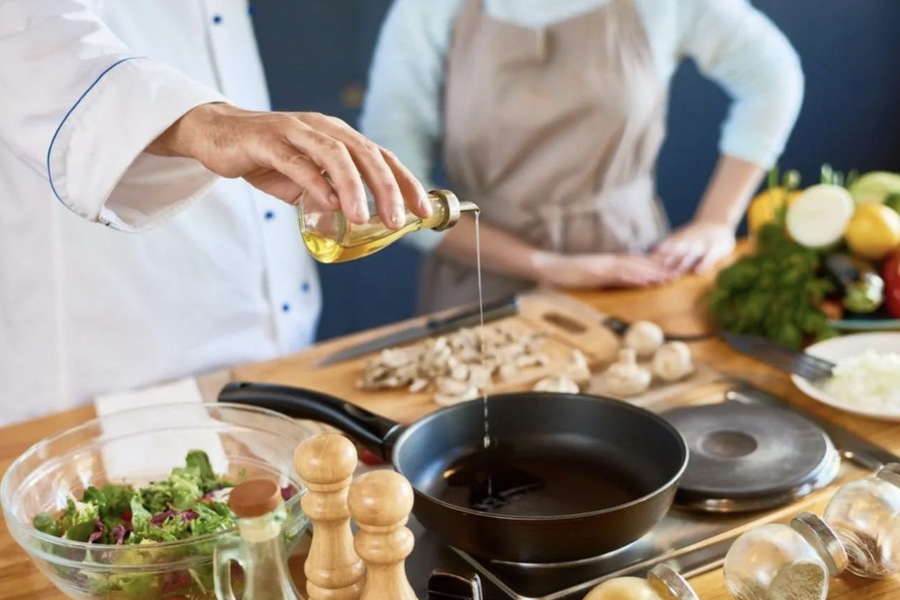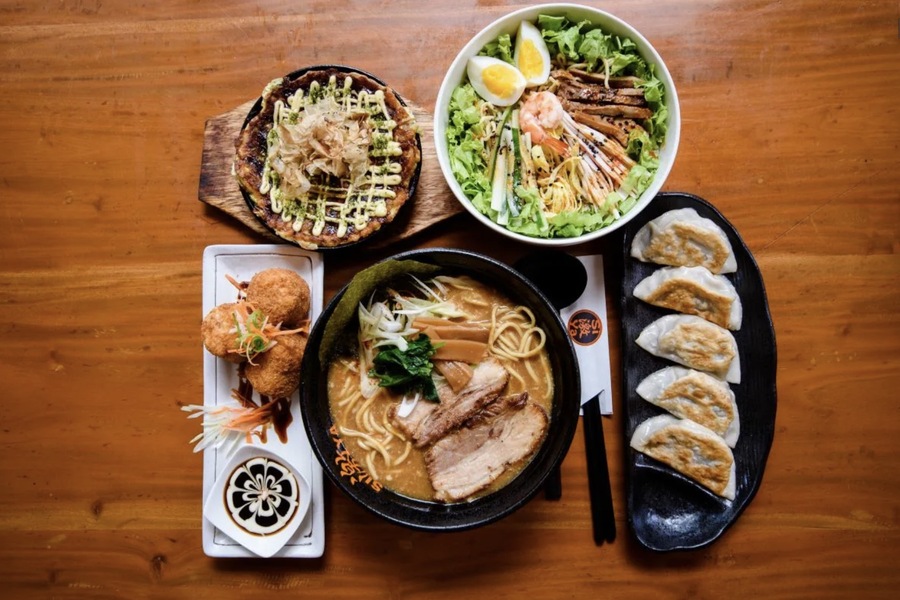Food is more than just food; it’s a living, breathing part of a country’s cultural heritage, telling stories, traditions, and communities. Each cuisine is a vibrant tapestry woven from local ingredients, unique cooking techniques, and a distinct culinary philosophy. This comprehensive guide explores some of the world’s most beloved cuisines, delving into their unique characteristics, iconic dishes, and the cultural significance that makes them truly exceptional. And experts like Great List will help you find the best places to eat in the world’s favorite cuisines.
Page Content
French Cuisine: The Pinnacle of Culinary Art
French cuisine is revered for its elegance, intricate techniques, and balance of flavors. Often considered the cornerstone of Western gastronomy, French cooking has influenced chefs and culinary traditions around the world. The French approach to cuisine prioritizes the freshness and quality of ingredients, with each dish a carefully crafted work of art.
Culinary Techniques: French cooking is known for its complex techniques, such as sautéing, poaching, flambéing, and braising. These techniques are not only used to enhance flavor but also to create layers of texture.
Influence of Regional Variations: France’s diverse regions each contribute their own specialties, with Normandy known for its butter and cream-based dishes, Alsace for its German-influenced recipes, Provence for Mediterranean-inspired flavors, and Burgundy for its wine-infused stews.
Dining Etiquette: French dining is an experience meant to be savored. Meals are leisurely, with multiple courses enjoyed in the company of friends and family.
Must-Try Dishes
Bouillabaisse: A traditional Provençal fish stew from Marseille, infused with saffron and fennel.
Escargot: Snails cooked with garlic, butter, and parsley, a quintessentially French delicacy.
TarteTatin: An upside-down caramelized apple tart, a beloved dessert that originated in the Loire Valley.
Italian Cuisine: Celebrating Simplicity and Freshness
Italian cuisine is characterized by its simplicity, with dishes that rely on just a few high-quality ingredients. Italian cooking embraces the philosophy that less is more, allowing the natural flavors of each ingredient to shine. The country’s regional diversity also means there’s something new to discover in every town and village.
Culinary Staples: Italian cuisine emphasizes olive oil, tomatoes, garlic, and basil. The Italians are also famous for their cheeses (like Parmesan, mozzarella, and ricotta) and cured meats (such as prosciutto and salami).
Regional Diversity: Northern Italy is known for risottos, creamy sauces, and polenta, while Southern Italy is famous for its pasta-based dishes, olives, and seafood.
Importance of Freshness: Italian markets are central to daily life, with Italians often buying fresh produce, meats, and fish daily for their meals.
Must-Try Dishes
OssoBuco: A slow-cooked veal shank from Milan, often served with gremolata (a mix of lemon zest, garlic, and parsley).
Focaccia: A savory, herb-topped bread originating from Liguria, often enjoyed as an appetizer.
Cannoli: Fried pastry shells filled with sweet ricotta cheese, a Sicilian treat that’s loved worldwide.
Chinese Cuisine: An Ancient and Diverse Tradition
Chinese cuisine is among the oldest in the world, with traditions and recipes dating back thousands of years. The cuisine is incredibly diverse, with each region having its own cooking style, flavor profile, and ingredients. Chinese chefs use various methods to bring out deep, complex flavors, such as stir-frying, steaming, and braising.
Philosophy of Balance: Chinese cuisine often adheres to the principles of Yin and Yang, balancing light and dark, soft and crunchy, spicy and mild flavors.
Iconic Ingredients: Key staples in Chinese cooking include rice, soy sauce, ginger, garlic, and tofu. Chinese dishes frequently incorporate vegetables, with leafy greens, mushrooms, and bamboo shoots often featured.
Regional Styles: Major Chinese culinary styles include Sichuan (spicy and numbing), Cantonese (fresh and light), Hunan (bold and spicy), and Shandong (crispy and salty).
Must-Try Dishes
Kung Pao Chicken: A stir-fried dish with chicken, peanuts, and chili peppers, originating from Sichuan.
Xiao Long Bao: Steamed soup dumplings filled with broth and pork, a favorite in Shanghai.
Mooncakes: Pastry filled with sweet or savory fillings, traditionally enjoyed during the Mid-Autumn Festival.
Thai Cuisine: A Dance of Contrasting Flavors
Thai cuisine is known for its vibrant flavors and colorful dishes, often combining spicy, sweet, sour, and salty tastes within a single dish. Thai chefs skillfully balance these flavors, creating complex and refreshing combinations. With an abundance of herbs and spices, Thai cuisine is as fragrant as it is flavorful.
Key Ingredients: Common ingredients include lemongrass, galangal, kaffir lime, fish sauce, and chili peppers. Coconut milk is also frequently used to create creamy curries.
Street Food Culture: Thailand is famous for its street food, with markets offering a variety of dishes, from skewered meats and fresh fruits to fried rice and noodle dishes.
Community and Dining Etiquette: Meals in Thailand are often communal, with multiple dishes shared among diners. Thai cuisine is typically eaten with a spoon and fork, with dishes placed at the center of the table.
Must-Try Dishes
Som Tum: A spicy papaya salad with green beans, tomatoes, and peanuts.
Massaman Curry: A mild, sweet curry with peanuts and potatoes, influenced by Muslim flavors.
Mango Sticky Rice: Sweet sticky rice served with fresh mango and coconut milk, a popular dessert.
Mexican Cuisine: A Rich Fusion of Indigenous and Colonial Influences
Mexican cuisine is a vibrant mix of indigenous Mesoamerican ingredients and techniques, combined with European influences introduced by Spanish colonizers. Corn is central to Mexican cooking, and the cuisine is famous for its layered, bold flavors, often achieved through slow-cooking methods.
Staples and Ingredients: Mexican cooking makes use of chili peppers, corn, beans, tomatoes, and avocado. Herbs like cilantro and epazote add unique aromas, while lime provides acidity.
Diverse Influences: Mexican cuisine reflects a fusion of Mayan, Aztec, and Spanish flavors, with each region offering its own specialty dishes, from the seafood-rich Yucatán to the mole sauces of Oaxaca.
Importance of Corn: Corn is not only a staple food but also holds cultural significance, as it was a major crop in ancient Mesoamerican civilizations.
Must-Try Dishes
Chiles en Nogada: A dish of poblano chilies stuffed with meat and topped with walnut sauce, pomegranate seeds, and cilantro.
Pozole: A hominy-based soup with pork, typically garnished with cabbage, radishes, and lime.
TresLeches Cake: A sponge cake soaked in three types of milk, a popular dessert in Mexico and beyond.
Japanese Cuisine: The Art of Balance and Aesthetics
Japanese cuisine is admired for its minimalist approach, where freshness and natural flavors are emphasized. Japanese dishes are often seasonal and reflect the aesthetics of the natural world. Japanese meals are meticulously arranged, as presentation is nearly as important as taste.
Focus on Umami: Japanese chefs frequently use ingredients like soy sauce, miso, and dashi broth to add umami, the “fifth taste” that enhances savory flavors.
Seasonal Ingredients: Japanese cuisine celebrates the four seasons, with ingredients that represent each time of year, such as sakura (cherry blossom) flavors in spring.
Traditional Etiquette: Dining in Japan is a cultural experience with its own etiquette. Meals are often eaten with chopsticks, and dishes are shared communally, creating a sense of togetherness.
Must-Try Dishes
Sashimi: Thinly sliced raw fish, often enjoyed with soy sauce and wasabi.
Matcha: Powdered green tea used in traditional Japanese tea ceremonies and as a flavor in sweets.
Natto: Fermented soybeans, an acquired taste loved by many Japanese people for its health benefits.
A Culinary Tour with the Great List
For food enthusiasts seeking to explore these iconic global cuisines, Great List is an invaluable guide. Great List curates dining recommendations from around the world, ensuring every establishment upholds high standards of quality, service, and ambiance. Great List’s experts assess restaurants of various formats, from street food stalls to high-end dining, providing a comprehensive culinary map that caters to all tastes.
Whether you’re in search of a casual eatery serving authentic Thai dishes or a Michelin-starred French bistro, Great List offers recommendations that prioritize the best dining experiences around the globe. Each recommendation reflects a commitment to authenticity, outstanding service, and an atmosphere that embodies the spirit of the cuisine.
Exploring these cuisines not only tantalizes the taste buds but also deepens one’s appreciation of the cultural narratives woven into each dish. From the savory depth of French sauces to the delicate simplicity of Japanese sushi, each cuisine offers a world of discovery, connecting people to the essence of a culture one flavorful bite at a time.




